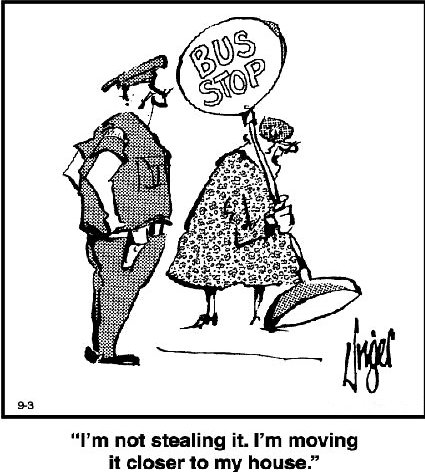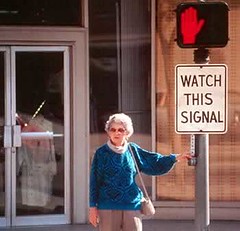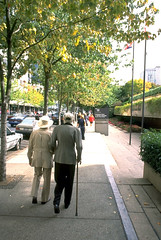Communities for all ages

Posted December 9, 2007 at 10:54PM
 I don’t know about you, but this getting-older thing kinda freaks me out. I had a birthday a couple of weeks ago and, although the people who knew treated me well, I've reached a point where I’d just as soon not celebrate the passage of time, you know? It's going to be a while yet, but I for one do not intend to go gently unto that good night, or even into the September of my years, thank you very much, and pardon my recklessness with metaphors.
I don’t know about you, but this getting-older thing kinda freaks me out. I had a birthday a couple of weeks ago and, although the people who knew treated me well, I've reached a point where I’d just as soon not celebrate the passage of time, you know? It's going to be a while yet, but I for one do not intend to go gently unto that good night, or even into the September of my years, thank you very much, and pardon my recklessness with metaphors.
Saturday’s Washington Post ran a story emphasizing one of the reasons why: the near-total lack of good transportation options in America for people who can’t or no longer wish to drive. I saw that in my mother’s case over the last decade, when she was basically trapped in her house in a completely auto-dependent neighborhood (walk score: 37).
This isn’t good. Here are some tidbits from the Post story:
- 600,000 people ages 70 and older stop driving every year.
- More than 20 percent of Americans 56 and older do not drive.
- 3.6 million nondrivers older than 65 stay at home on any given day because they have no other option.
- Older nondrivers are likely to make 15 percent fewer trips to the doctor, 59 percent fewer trips to stores or restaurants, and 65 percent fewer trips to social, family or religious gatherings.
- The number of senior citizens is expected to double by 2030.
 The story goes on to describe what some local charities and informal groups are heroically doing to pitch in and drive folks around. They deserve medals. But guess what: they are having a hard time finding volunteers to do the driving, because most of the people who are available during the hours needed are retired and themselves elderly. The reporter, Frederick Kunkle, cited one case in which a 60-year-old cancer patient was being driven to the doctor’s office by an 80-year-old, with the follow-up trip scheduled to be handled by an 87-year old.
The story goes on to describe what some local charities and informal groups are heroically doing to pitch in and drive folks around. They deserve medals. But guess what: they are having a hard time finding volunteers to do the driving, because most of the people who are available during the hours needed are retired and themselves elderly. The reporter, Frederick Kunkle, cited one case in which a 60-year-old cancer patient was being driven to the doctor’s office by an 80-year-old, with the follow-up trip scheduled to be handled by an 87-year old.
Smart growth strategies build communities where people can age in place, with dignity and choices. Here’s how:
- Placing shops and services, including community centers and libraries, within walking distance.
- Creating a safe walking environment, with sidewalks, safe street crossings, and slow traffic speeds.
- Providing transportation choices, including frequent and convenient public transit service.
- Providing a diversity of housing types, from single-family homes to townhouses, to apartments and condos, within the same community. (This can be done partly by integrating accessory units, such as granny flats and carriage house apartments, into a neighborhood of predominantly single-family homes.)
- Making sure housing is available for people at different income levels in the neighborhood.
 You don’t have to take my word for it. The AARP thinks so, too. A passage in the current issue of their magazine titled “What Makes a Community Livable?” cites smart growth, mixed-use development, new urbanism, and “easy living standards” as the key ingredients. And a well-annotated article on their web site, noting that people overwhelmingly want to live in their own communities as they age, describes the importance of good public transportation choices and the hope presented by new models of community design and smart growth.
You don’t have to take my word for it. The AARP thinks so, too. A passage in the current issue of their magazine titled “What Makes a Community Livable?” cites smart growth, mixed-use development, new urbanism, and “easy living standards” as the key ingredients. And a well-annotated article on their web site, noting that people overwhelmingly want to live in their own communities as they age, describes the importance of good public transportation choices and the hope presented by new models of community design and smart growth.
The sad fact is that the kind of communities that the AARP and smart growth advocates want is illegal in much of America, because it violates outmoded zoning standards that prevent the placing of convenient shops and services, and a variety of housing types, within neighborhoods.
We’re working on it.